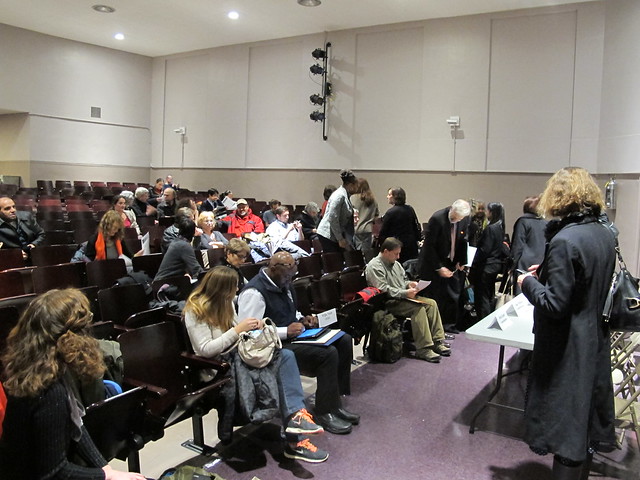
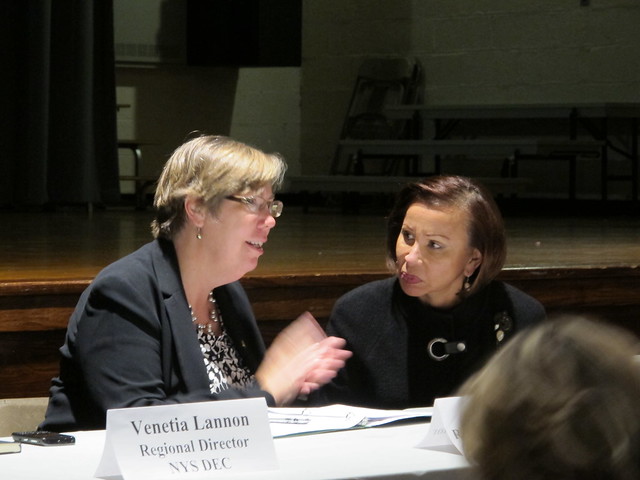 Judith Enck, EPA Regional Manager of Region 2 and Congresswoman Nydia Velázquez
Judith Enck, EPA Regional Manager of Region 2 and Congresswoman Nydia Velázquez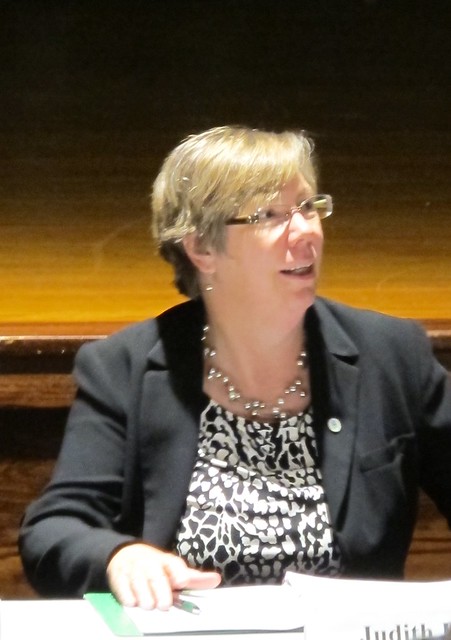 Judith Enck, EPA Regional Manager of Region 2
Judith Enck, EPA Regional Manager of Region 2 Congresswoman Nydia Velázquez
Congresswoman Nydia Velázquez Councilmember Brad Lander
Councilmember Brad Lander Assemblywoman Joan Millman
Assemblywoman Joan Millman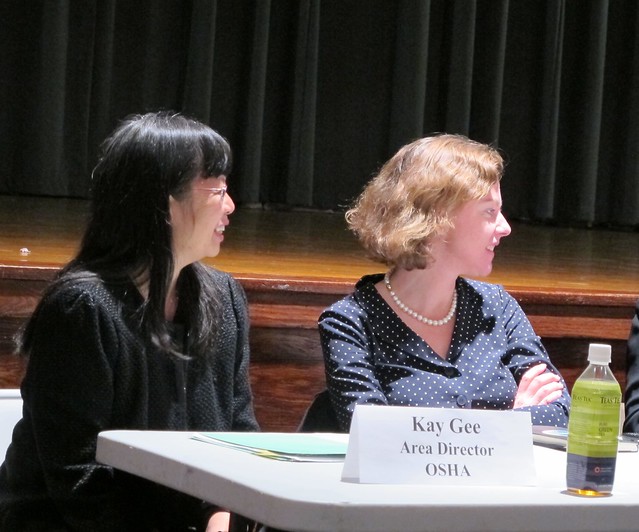 Kay Gee, Area Director of Osha and Venetia Lannon, Regional Director, NYS DEC
Kay Gee, Area Director of Osha and Venetia Lannon, Regional Director, NYS DEC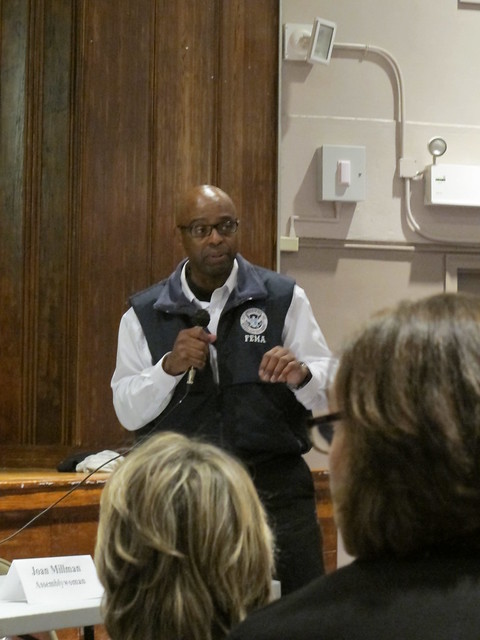 Willie Nunn, FEMA Division D Supervisor, Brooklyn
Willie Nunn, FEMA Division D Supervisor, Brooklyn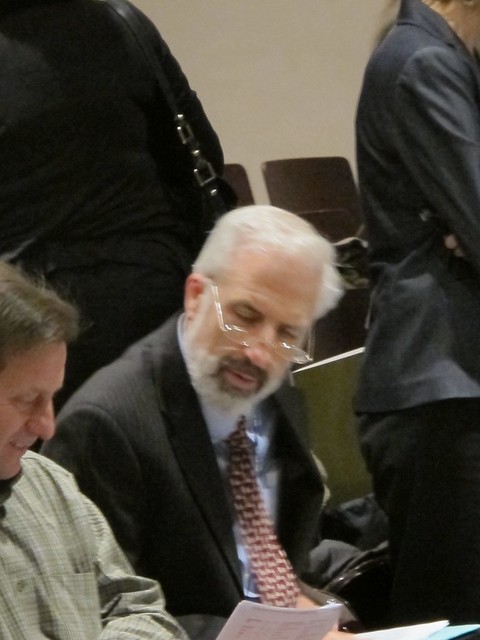 Walter Mugdan, EPA Region 2 Superfund Director
Walter Mugdan, EPA Region 2 Superfund Director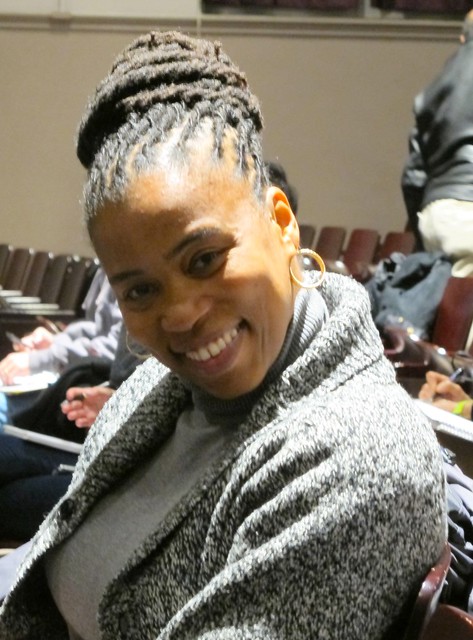 Natalie Loney ,EPA Region 2 Community Involvement Coordinator
Natalie Loney ,EPA Region 2 Community Involvement Coordinator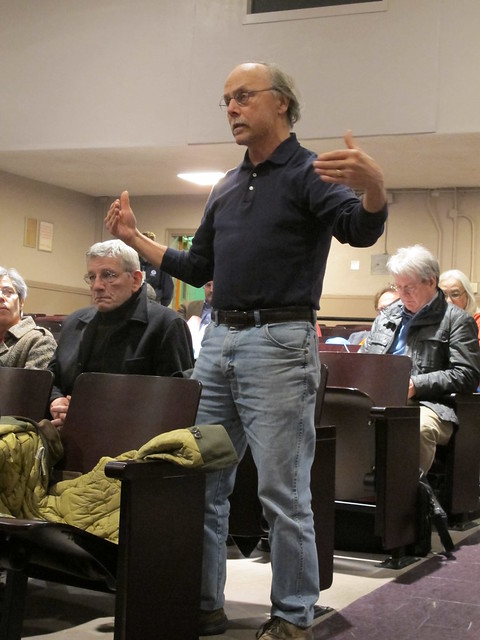
Resident Mike Salvator asking about future development in Gowanus
To address continuing concerns about the floodwater and the sludge left behind when the Gowanus Canal, an EPA Superfund site, overflowed its banks during Hurricane Sandy last month, Congresswoman Nydia Velázquez held an informational meeting for local residents last night at PS 32 on Hoyt Street. The meeting was co-sponsored by State Senator Daniel Squadron, State Senator Velmanette Montgomery, Assemblywoman Joan Millman, Councilmember Steve Levin, and Councilmember Brad Lander.
In attendance were Judith Enck, EPA Regional Manager of Region 2 , as well as representatives from Occupational Safety and Health Administration (OSHA), Federal Emergency Management Agency (FEMA), and New York State Department of Environmental Conservation.
Judith Enck told the audience that she came out to the Gowanus area personally the afternoon after the storm and observed a 'most disturbing petroleum sheen' on the waterway. She explained that her agency collected samples from the canal on October 31, 2012. They also took four samples from the ground floors of two buildings that had been flooded during the storm. One of the buildings is located at the head of the canal, and the other near the 3rd Street turning basin.
Sampling was repeated on November 4th, 5th and 9th.
The samples of flood water from those two buildings were analyzed for both bacteria and for 139 different chemicals within the following categories: metals, volatile organic compounds, petroleum related compounds and semi-volatile organic compounds like polycyclic aromatic hydrocarbons (PAHs) which are the primary contaminants in Gowanus Canal sediment.
Analysis of the samples showed bacteria levels to be very high. It also indicated low- level traces of gasoline and petroleum, consistent with storm run-off.
However, toxin levels were either below levels that would trigger concern or not detected at all. It would appear that there was no scouring of the bottom of the canal during the storm and that the toxic sediment remained undisturbed.
The main concern for Gowanus home owners whose houses were flooded are mold and bacteria. Bacteria can be traced directly to the raw sewage and street run-off that discharges from the Combined Sewage Overflows (CSOs) in the Canal.
Enck suggested common sense steps to deal with mold and bacteria. She stressed the importance of wearing protective clothing, rubber boots, rubber gloves, googles and facial masks. "Bacteria will die off eventually," Enck explained. However, if not dealt with properly, it can compromise the immune system." For extra precaution, a Tetanus booster may be recommended.
Enck stated that the EPA is committed to being transparent and will continue to provide information to this web site: http://www.epa.gov/sandy
It was clear from comments from the audience that many home-owners and renters were still dealing with a host of issues almost three weeks after the hurricane. One owner reported still not having power. A renter expressed frustration that her landlord had not even pumped out his basement yet. Another resident mentioned that oil residue from the flood water had coated basements and sidewalks and that some of her neighbors had used brake fluid to dilute the sticky film.
The conversation quickly turned to the lessons that can be learned from this storm. Many, including the elected officials at the meeting, were in agreement that sea level rise and global warming is a reality and needs to be factored into any future development along the Gowanus.
Congresswoman Velázquez spoke of the need to set public policy and of a revision of the type of development allowed along the coastline. "This is a new reality" she stated. "It offers an opportunity for recovery, preservation and mitigation."
Councilman Lander felt that this is a very important time, one which offers a re-set button in regards to development on the shores of the Gowanus Canal. He mentioned that FEMA will be redrawing their existing flood maps to reflect flood lines during Hurricane Sandy. "We also need to keep pushing for infrastructure change."
Several people, including Jim Vogel of State Senator Velmanette Montgomery's office, called for a moratorium on building on the shores of the Gowanus until all risks are assessed, until the City stops using the canal as a cess pool, building codes and zoning rules for coastal areas are reviewed, but most importantly, until we all come to terms with the fact that we may not have to wait 100 years for a storm like Sandy to recur.
No comments:
Post a Comment